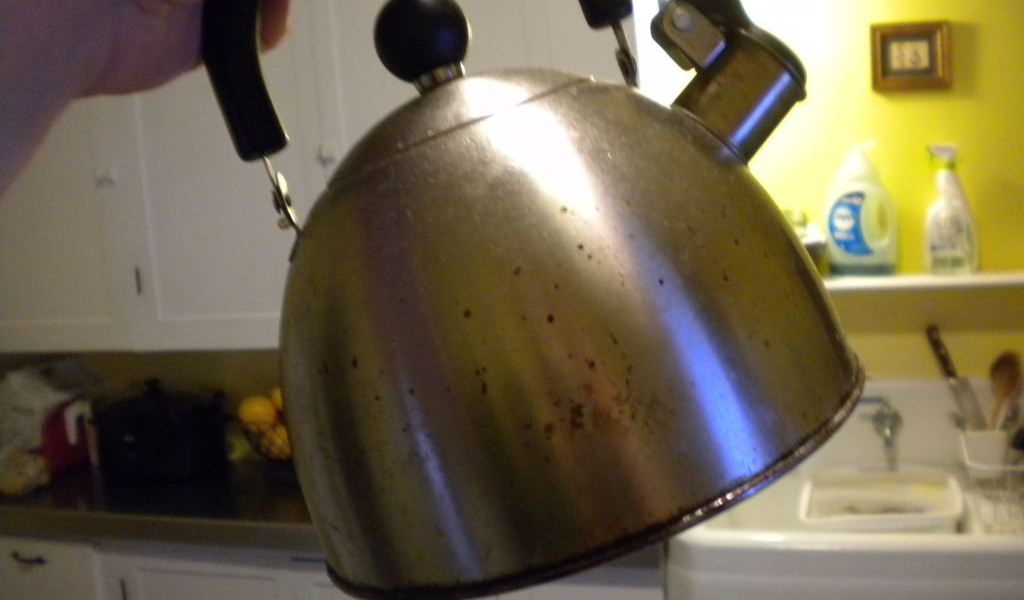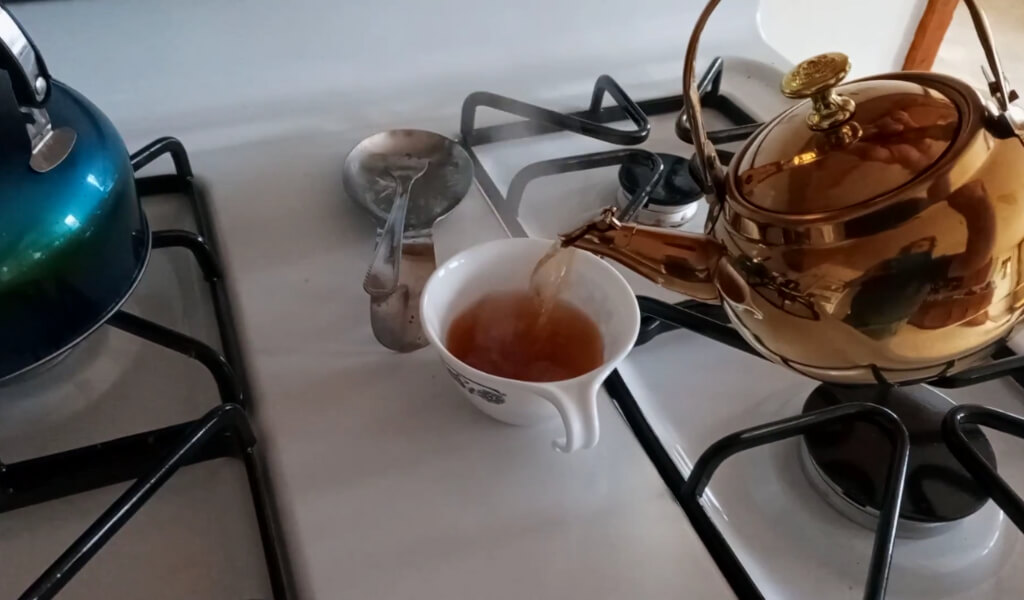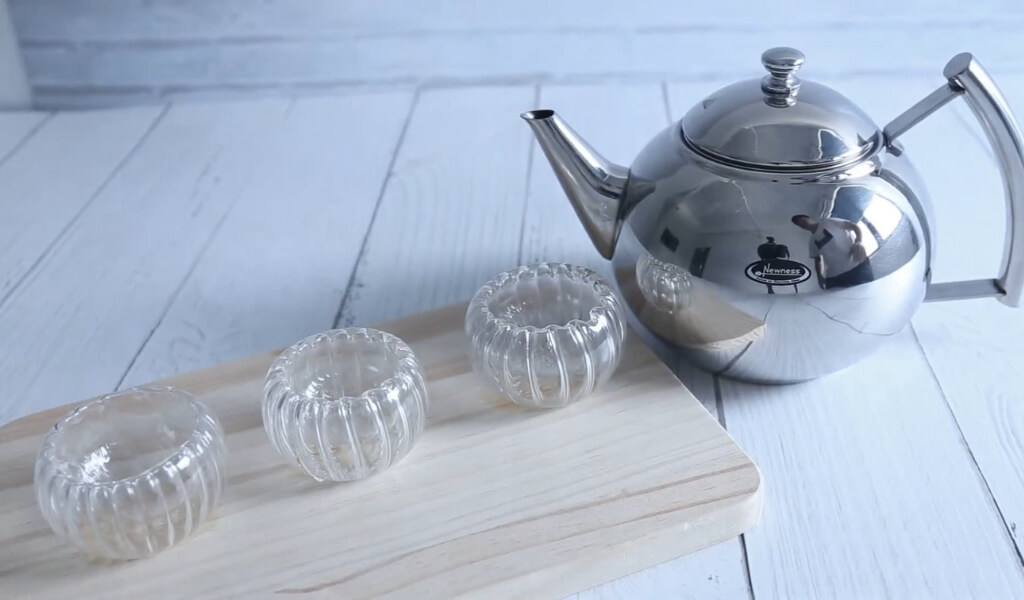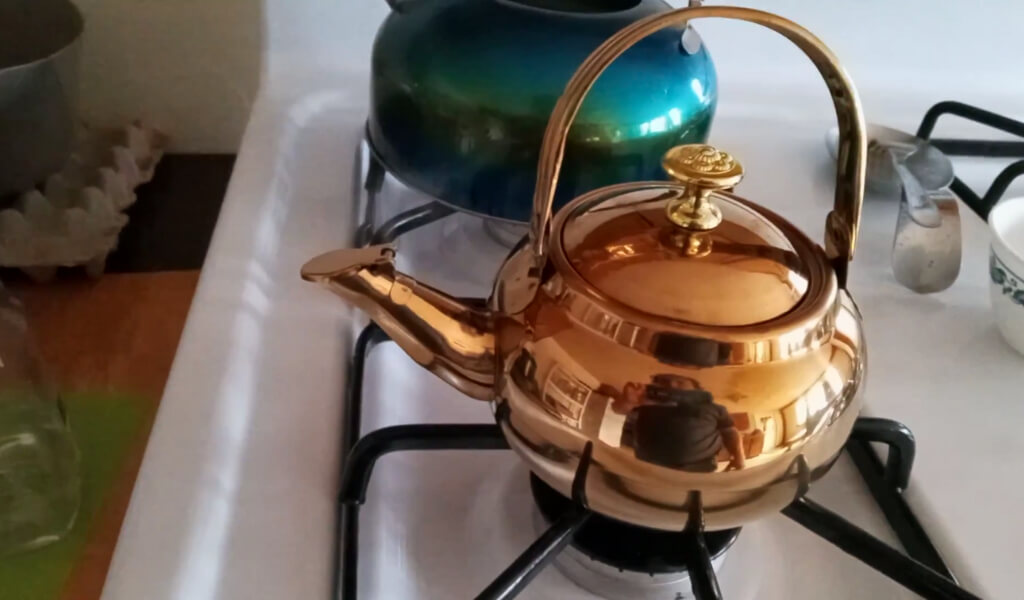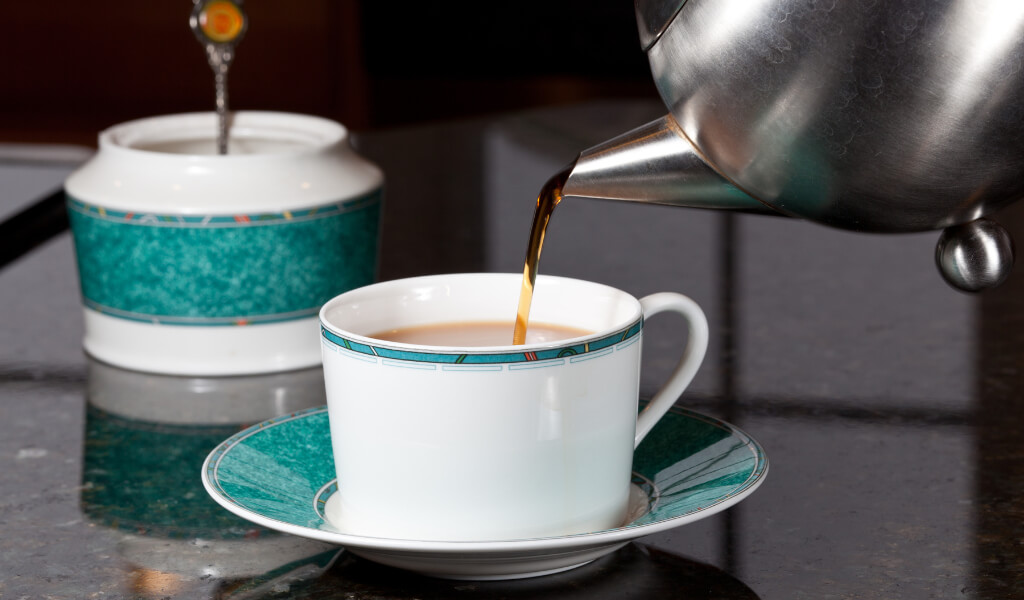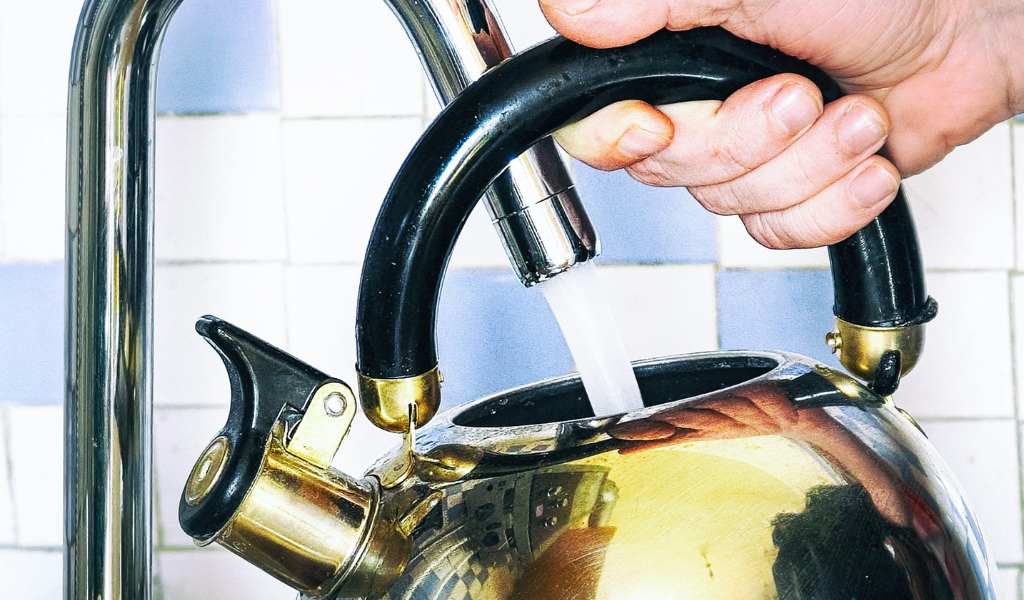Welcome to my ultimate guide on how to use a Stainless Steel Teapot!
These shiny, durable pots aren’t just for show – they’re designed to bring out your favorite teas’ rich, full flavors.
Whether you’re a first-time tea brewer or a seasoned tea connoisseur, this guide is packed with insider tips on choosing, using, and caring for your stainless steel teapot.
I’ll even share some common mistakes to avoid and special tips for brewing a perfect cup of Sencha tea.
Let’s put the kettle on and dive right in!
Read More: Top 8 Best Teapots 2023 – Actual Tests And Detailed Reviews
How to clean Stainless Steel Tea Kettle
To clean a Stainless Steel Tea Kettle, follow these steps:
- Fill the kettle halfway with equal parts water and vinegar.
- Place the kettle on the stove and bring the mixture to a boil.
- Let the mixture simmer for about 10 minutes.
- Turn off the heat and let the kettle cool down.
- Empty the kettle and rinse it thoroughly with water.
- For stubborn stains or mineral buildup, scrub the kettle with a mixture of baking soda and water.
How to clean stainless steel teapot? Here’s how you can keep your teapot shiny and spotless.
1. Soap and Water
Start by filling your teapot with hot water. Add a squirt of dish soap, grab a soft sponge, and gently scrub the insides. Remember to wash the outside, too, to keep it gleaming!
2. Focus on the Spout
This one’s important – remember to give the spout a good clean. It needs extra attention, especially if you’ve got a teapot with a stylish gooseneck spout. Just work the soapy water up into the spout for a thorough clean.
3. Battle the Stains
Notice some stubborn stains or water spots? Don’t worry; a simple mix of baking soda, vinegar, and water will do the trick. Let it soak inside the teapot for a few hours, then rinse it. Like magic, your teapot will be sparkling clean!
4. Handle with Care
When it comes to keeping your teapot clean, avoid using abrasive scrubbers like steel wool. They can damage the surface and ruin the beautiful mirror-like finish we adore. Instead, opt for gentle sponges and allow for some soaking time for optimal results.
5. Don’t Forget the Infuser
Many stainless steel teapots come with a built-in infuser. Make sure to remove this and clean it too. Rinse it under hot water to keep it fresh and ready for your next brew.
And there you have it! By following these simple steps, your stainless steel teapot will not only look good, but it’ll also make sure every cup of tea you brew tastes its absolute best.
How to Remove Tea Stains from Your Stainless Steel Teapot
Even the most loved teapots can develop a few tea stains over time. But fret not, fellow tea lover; there’s a simple home solution for you on how to clean a stainless steel kettle outside.
Mix two tablespoons of baking soda with warm water to create a paste. Apply this mixture to the stained areas and gently scrub with a soft cloth. Rineware the pot thoroughly; your stainless steel teapot is stain-free and shiny again.
Read More: How to choose a perfect Teapot
How to Store Your Stainless Steel Teapot Properly
After use and cleaning, dry your teapot thoroughly to prevent any water spots or rust.
Store it in a dry, cool place, ideally away from the stove or sink, to avoid accidental water splashes or heat damage.
And one more thing – avoid stacking other items on top of your teapot. This will keep it dent-free and always ready for your next comforting brew.
Read More:
- How Much Tea to Use for the Perfect Strength
- How to clean a cast iron teapot
- How to Use a Sterling Silver Teapot? Mastering the Art of Brewing
- How to store Ceramic Teapot
- Cleaning and Maintenance of Your Porcelain Teapot
How To Choose The Right Stainless Steel Teapot
Before diving into stainless steel tea kettle cleaning, choosing the right stainless steel teapot is akin to discovering your tea soulmate. It’s not just about its gleaming appearance; it’s about how it complements your daily tea routine. Let’s get started.
Things to Consider For A Stainless Steel Teapot
When buying a stainless steel teapot, it’s not a one-size-fits-all deal. There are a few key factors to consider.
- Heat Retention: Stainless steel is renowned for its heat retention, ideal for teas requiring higher brewing temperatures, like black and oolong teas.
- Built-in Infuser: If you’re a loose-leaf tea enthusiast, consider a teapot with a built-in infuser. This feature lets the tea leaves dance around and release their flavors fully.
- Lid Fit: A securely-fitting lid is more than a safety feature. It also helps keep the heat and aroma of your tea locked in.
- Handle Comfort: This might seem trivial, but a comfortable handle makes the whole tea brewing process a joy. Look for a teapot with an ergonomic handle that won’t heat up.
How to Choose the Suitable Size and Shape
When choosing a teapot, think about your tea habits. If you brew for yourself, go for a small teapot (around 500 ml). For a tea-loving family or frequent guests, opt for a larger one (around 1,000 ml or more).
The teapot’s shape matters beyond looks. A tall, slender teapot retains heat better, while a short, wide one cools tea quickly, perfect for green or white teas best enjoyed at lower temperatures.
Choosing a stainless steel teapot is a personal journey. The best teapot brews a tasty cup and brings a smile to your face each time you use it.
The Ultimate Way to Handle a Stainless Steel Teapot
Welcome to the heart of the tea brewing experience! Using a stainless steel teapot can elevate your tea-drinking moments to new levels of delight. Let’s explore how to bring out the best in your teapot.
Preparing for First Use
Unboxing a new stainless steel teapot is always exciting, but giving it a good clean before you start brewing is important. Rinse it with warm water and mild dish soap, then dry it thoroughly. This initial clean will remove any manufacturing residues and ensure your first brew tastes as pure as it should.
Step-by-step Guide to Brewing Tea in a Stainless Steel Teapot
Now that your teapot is ready let’s get brewing!
- Pre-heat the Teapot: Fill it with hot water and let it sit for a minute or two. This pre-heating step helps maintain the water temperature during brewing.
- Add the Tea: Empty the preheating water and add your tea. The amount depends on the type of tea and your personal preference, but a good starting point is one teaspoon per cup.
- Pour the Water: Now, fill the teapot with hot water. The temperature depends on the type of tea you’re brewing.
- Let it Steep: Let the tea steep for the recommended time. This varies between tea types. Don’t rush it – good things come to those who wait!
- Enjoy!: Your perfect brew is ready to serve.
Pour and Serve Tea with a Stainless Steel Teapot
Pouring tea from your teapot is part of the charm of the tea experience.
Hold the lid in place with a free hand and pour slowly to prevent spills. Always be aware of the temperature of the teapot and handle – use a tea towel if necessary.
For a truly delightful tea session, serve your tea in cups that complement your teapot. Nothing beats the elegance of a matching set, right?
Why Are Stainless Steel Teapots Special?
A new kid on the teapot block has been capturing the hearts of tea lovers like myself: stainless steel teapots. Let me share why I find them special.
The Benefits of Stainless Steel Teapots
Unlike their older counterparts, like cast iron and ceramic, stainless steel teapots only started making a splash in the early 1900s. But don’t let their youth fool you – they have outstanding benefits.
These teapots are incredibly durable, capable of withstanding drops and bumps while remaining lightweight and easy to use. Additionally, their modern design adds an elegant touch to your tea experience.
A significant benefit I appreciate is that, unlike traditional clay teapots in China, stainless steel teapots won’t absorb or change the flavors of your tea. This means I can switch between my favorite Earl Grey, revitalizing Green tea, or soothing Chamomile without concerns about lingering tastes.
Moreover, these teapots won’t chip or crack like porcelain and clay teapots can. And unlike silver, stainless steel doesn’t tarnish over time. The cherry on top? They are super easy to clean – most are even dishwasher safe.
The Stainless Steel Role in Preserving tea Flavor
The unique properties of stainless steel also make it ideal for preserving the authentic flavor of your tea. It can even be used directly on the stovetop, separating it from cast iron and porcelain teapots. You can brew your loose tea or tea bags directly in the teapot instead of heating the water separately. Plus, the excellent heat retention of stainless steel keeps your tea warm for extended periods.
Mistakes When Using a Stainless Steel Teapot
We all learn from our mistakes, but when it comes to your precious teapot, it’s better to avoid them in the first place. Let’s bust some common misconceptions and avoid some classic mishaps.
Common Misconceptions about Stainless Steel Teapots
A common misconception I’ve come across is that all stainless steel teapots are the same. That is not true, my friends! They can vary greatly in quality, design, and features. Always do your homework before purchasing one to ensure it suits your tea-drinking habits.
Another myth is that stainless steel teapots can’t be used to brew delicate teas like green or white teas because they retain heat too well. You can perfectly brew any tea in a stainless steel teapot with careful temperature control.
Things tot avoid with Your Stainless Steel Teapot
Here are some tea-time faux pas to avoid:
- Avoid Overfilling: I know you love your tea. But filling your teapot to the brim can cause spillage and may make your tea too strong.
- Don’t Ignore Cleaning: Yes, they are tough, but they need love too. Regular cleaning prevents tea stains and keeps the flavors fresh.
- Avoid Abrasive Cleaners: Stainless steel can scratch, so stick to soft sponges and mild soaps.
- Don’t Leave Tea In: Leaving tea in your teapot for too long can lead to staining and flavor alteration. Empty your teapot after each use.
- Don’t Rush Heating and Cooling: Rapid temperature changes can damage your teapot. Always allow your teapot to cool naturally.
Brewing Sencha Tea in a Stainless Steel Teapot
Sencha tea holds a prized place in the world of tea, and rightly so. Brewing this Japanese green tea is an art form, and using a stainless steel teapot can add to the experience.
The Art of Brewing Sencha Tea
Brewing Sencha tea is like conducting a symphony; each step is crucial to create a harmonious result. Here’s how I like to do it:
1. Preheat the Teapot
Fill your teapot with hot water and let it sit for a moment. This step ensures that your tea brews at a consistent temperature.
2. Add the Sencha Tea Leaves
Empty the hot water, then add in your Sencha tea leaves. A teaspoon per cup is a good rule of thumb, but feel free to adjust based on your taste.
3. Add the Hot Water
The water for Sencha should be slightly cooler than other teas – around 158-176°F (70-80°C). Pour the water over the leaves and let the magic begin.
4. Steep the Tea
Let the tea steep for about 1 minute. Trust me; patience pays off.
5. Pour and Enjoy
Pour all the tea into your cup or cups to stop brewing further. Now, take a moment to enjoy the lovely aroma before your first sip.
Specific Tips for Brewing Sencha Tea in Stainless Steel Teapots
When brewing Sencha tea in a stainless steel teapot, here are a few extra tips I’d like to share:
- Temperature Control: Stainless steel teapots are excellent at retaining heat, so be mindful of your water temperature. A cooking thermometer can be helpful here.
- Avoid Over Steeping: Try not to steep Sencha tea for too long to keep the delicate flavor and prevent bitterness.
- Clean After Each Use: Sencha leaves can leave a residue that may affect the flavor of your next brew. Rinse your teapot well after each use.
These tips help enhance your Sencha tea brewing experience. Remember, it’s all about savoring the journey and enjoying the perfect cup of tea.
Conclusion
Just to remind you, here are the key takeaways from our journey:
- Stainless steel teapots are a fabulous choice, offering durability, elegance, and versatility.
- They are fantastic at retaining heat and don’t alter the flavor of your teas.
- Always clean your teapot well after each use to maintain its sparkle and function.
- Choose the right teapot based on your needs, considering size, design, and features.
- Avoid common misconceptions and mistakes to get the most out of your teapot.
- Brewing Sencha, or any other tea, in a stainless steel teapot can be a unique and rewarding experience.
After diving into the world of stainless steel teapots, I hope you’ve found value in learning how to use one properly.
From My Teapot to yours, I wish you a joyous journey filled with aromatic brews, quiet moments, and an enduring relationship with your chosen stainless steel teapot. Here’s to the perfect cup of tea every time!
Thanks for Spiritea Drinks
FAQs
How do you clean the outside of a Stainless Steel Tea Kettle?
You can clean the exterior of a Stainless Steel Tea Kettle using a soft, damp cloth with a little dish soap. Wipe the outside carefully and then rinse with a clean, damp cloth. Be sure to dry thoroughly to prevent water spots.
How to clean stainless steel kettle by removing rust?
Removing rust from a Stainless Steel Tea Kettle usually involves a paste made from baking soda and water. Apply the paste to the rusted area, let it sit for a few minutes, then scrub gently with a soft brush or cloth.
I’m Shanna, creator of Spiritea Drinks. I’m all about teaching people to grow their own food, tea, cook what they harvest, and eat with the seasons.

